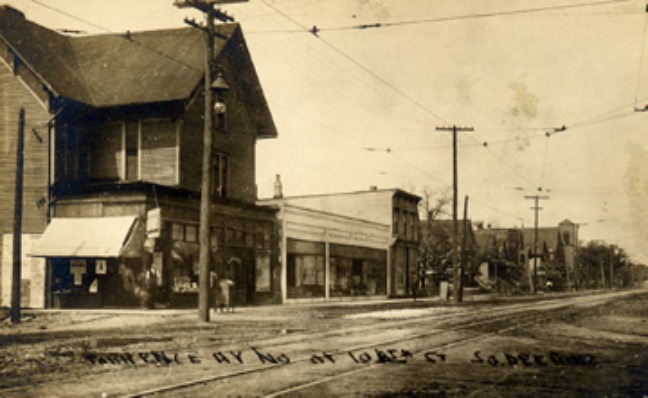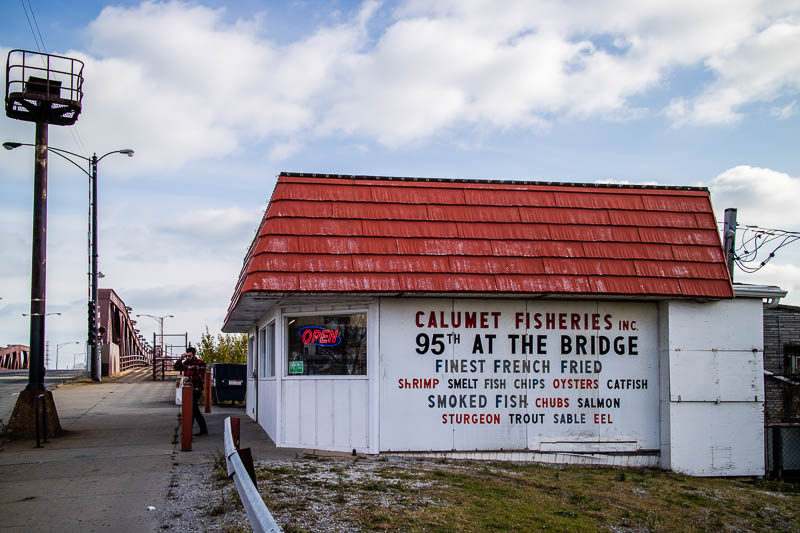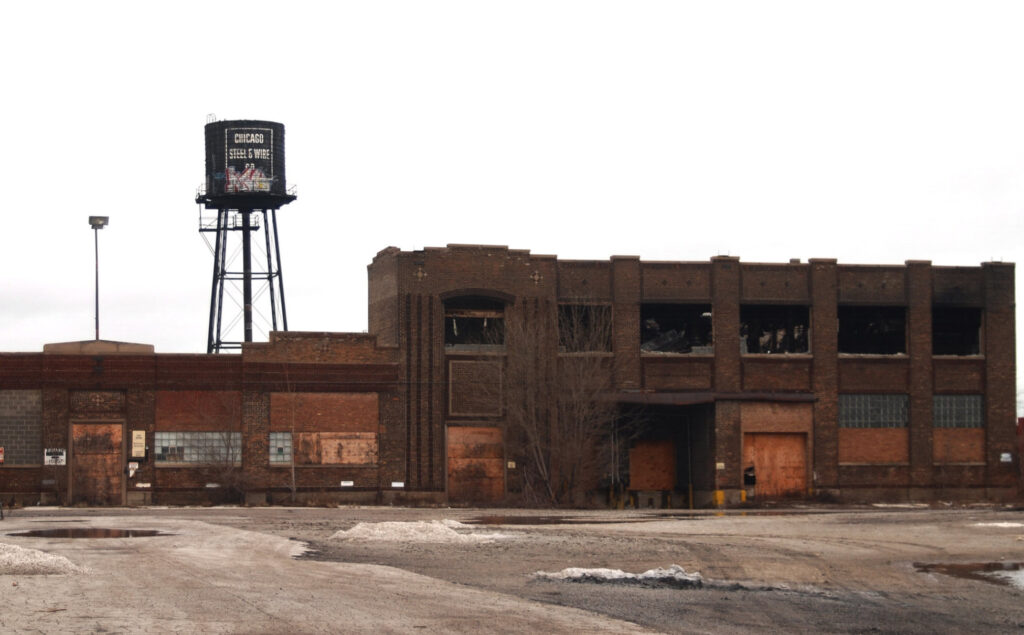
South Deering, situated in Chicago’s South Side, is the most expansive among the 77 official Chicago Neighborhoods. It is essentially an industrial area, however, a minor residential district is located in the northeast corner and a great part of the area is taken up by Lake Calumet. A majority of the community area, 80%, is classified as industrial, natural wetlands, or parks, while the rest is assigned for residential and small-scale commercial uses. It belongs to the 10th Ward, which was formerly under the authority of Alderman Edward Vrdolyak, a close associate of the late Richard J. Daley.
Charles Deering, an executive of the Deering Harvester Company that went on to become International Harvester, lends his name to the name of this neighborhood. Wisconsin Steel, established in 1875, was a property of International Harvester and was located along Torrence Avenue from 106th Street to 109th Street.

The renowned Calumet Fisheries, which has been in operation since 1928 and has been featured on Anthony Bourdain: No Reservations, is located on 2510 E 106th St in Chicago, IL 60617. This address is also the site of the once-thriving Wisconsin Steel Works, which was originally opened in 1875 as the Joseph H. Brown Iron and Steel Company. Sadly, since the steel mill’s closure in 1980, the area has experienced economic hardship.
In the 1870s, immigrants from England, Wales, and Ireland were drawn to the South Deering area due to the industrial jobs in close by factories. As more factories began to be built along the Calumet River, individuals from eastern and southern Europe started to settle there. By the 1910s, a small Mexican community had been established.
Wisconsin Steel, the Illinois Slag and Ballast Company, the Federal Furnace Company, and U.S. Steel Southworks (which is located near South Chicago) and the Ford Assembly Plant (in Hegewisch) have all been major employers in the area. In addition, a large railroad marshalling yard has been in the northwest section of the neighborhood since the 1870s.
During WWI and the 1920s, South Deering experienced success, however, just like other localities that were dependent on heavy industry, it was destroyed in the Great Depression. Production went down, leading to a huge amount of joblessness. By October 1933, around one fifth of the households were being given aid from the municipal, state, or federal government.
The onset of World War II brought about improved prospects for South Deering, with its mills and other factories working day and night, even on holidays, to produce the items needed for an Allied victory – namely steel, food products, and armored vehicles. During this period, the segregated Trumbull Park Homes public housing project and the Jeffery Manor subdivision were built, and the population increased from 7,900 in 1930 to 18,900 by 1960. However, racial tensions rose significantly beginning in 1953, as a small number of African American families sought suburban-style homes in the area, provoking hostile reactions from the existing white inhabitants. This contributed to white flight in the 1960s and 1970s, with people moving to suburbs such as Dolton, Riverdale, Burnham, Calumet City, South Holland, and Lansing; though it did not become as severe as in other neighborhoods such as Roseland, South Chicago, and South Shore.
Irondale
In the late 1800s, the Joseph H. Brown Iron & Steel Company (Wisconsin Steel after) was created, and a town named “Irondale” was built nearby. Most of the dwellings were located west of Torrence Avenue, between 103rd and 109th Streets. Torrence Avenue was home to several taverns, particularly south of 106th Street, in order to provide refreshment to the local industrial laborers after their workday.
In the 1920s, during the Chicago real estate boom, aerial photographs reveal that the places which would eventually become Jeffrey Manor and Vet’s Park were designed. However, it was not until the 1950s that homes were established on these sites as a consequence of the Great Depression.
Jeffrey Manor
Constructed in 1947, Jeffery Manor[7] is bordered by 95th Street to the north, Torrence Avenue to the east, 103rd Street to the south, and the Chicago and Western Indiana Railroad to the west. This neighborhood was mainly inhabited by Jewish people and World War II veterans who were buying their first home during the time the steel mills were working. The residences in this area are typically duplexes, with bungalows and detached two-story houses towards the outside of the area.
Jeffery Manor has a small area within it known as Merrionette Manor. This part of the neighborhood is not arranged in the traditional grid-like pattern that is typical of Chicago, but instead has winding roads that create loops, creating an atmosphere that is more suburban than the industrialized surroundings.
Jeffery Manor has a small area within it known as Merrionette Manor. This part of the neighborhood is not arranged in the traditional grid-like pattern that is typical of Chicago, but instead has winding roads that create loops, creating an atmosphere that is more suburban than the industrialized surroundings.
Vet’s Park
The district located between 95th to 103rd and Torrence Avenue to the Norfolk Southern railroad tracks has been designated “Vet’s Park”, due to the fact that a majority of the homes there were constructed shortly after World War II to provide shelter to veterans who had returned and desired to work in industry.
Slag Valley
For almost a century, Chicagoans have referred to the region of S. Commercial Avenue between the 100th and 104th Streets as “Slag Valley” due to the piles of slag, petroleum coke, salt and other materials that have been left exposed near residences and businesses.

The Great Depression saw the industrialization of the Calumet River, yet Lake Calumet was mostly unaffected until the 1950s. In that decade, the City of Chicago and Illinois went ahead to fill in portions of the lake in order to make the International Port of Illinois (1959) and bigger slips for steel works, chemical plants, and oil refineries.
In the 1970s and 1980s, South Deering was greatly affected by the dwindling of its heavy industry. Wisconsin Steel, which had been home to more than 3,000 workers in the sixties, closed its doors in 1980, and U.S. Steel Southworks had to let go half of its employees in the 70s before shutting down in 1992. The community has never bounced back from these losses, and its population decreased by approximately 20%.

